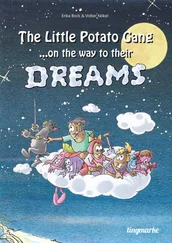These days, Abad and his wife still eat the good old foods of Colombian cuisine, or as many of them as they can find. They cook a lot of soups and fish or hearty dishes of meat, rice and vegetables. But such dishes are no longer the norm for Colombians. Abad is convinced that if Keith came back to Colombia now, he would have no problem finding foods just like the ones he ate back home in Los Angeles.
Abad has noticed that young Colombians no longer eat the way that he does and that the change has happened lightning fast – ‘maybe five years, maybe ten’, he tells me. He sees young Colombians abandon the old corn arepas for breakfast in favour of Westernised sliced wheat bread. He watches as they eat hamburgers and avoid the old rice and beans. He sees them sipping not fresh fruit juices but fizzy drinks, ranging from 7 Up to Colombiana – a local drink that Abad describes as ‘sweeter than syrup’. He feels sad that the country seems to have lost its pride in the old foods. Abad’s 94-year-old mother still makes changua for herself when she is ill, but he doesn’t know anyone else who does.
What’s happening in Colombia is happening in most other countries too. Children around the world are now eating weirdly similar food to each other. You wouldn’t expect a child in Portugal and a child in China to consume the same after-school snack. But a study conducted from 2011 to 2013 across twelve countries based on interviews with more than seven thousand nine- to eleven-year-olds found that there were very similar patterns of eating across all twelve. In particular, those children who had an ‘unhealthy’ pattern of eating tended to consume near-identical foods: packaged cookies and cereal bars, branded sweets, chocolates and crackers. 30
Whether the children were in Australia or India, Finland or Kenya, they knew and devoured much the same things, which had nothing to do with the traditional cuisine of their country or even whether they were rich or poor. The children ate French fries and drank fizzy drinks; they ate doughnuts and crisps, cakes and ice cream. The nine-year-old in Bangalore and his or her counterpart in Ottawa had access to the same fizzy drinks, the same breakfast cereals, many of the same bagged savoury snacks. Across all the countries, the more healthy-eating children also shared similar patterns (except for the fact that children in India drank whole milk whereas those in Finland and Portugal drank skimmed milk). Children of all countries who ate ‘healthily’ ate dark leafy vegetables, orange vegetables and beans; fish and cheese; and fruit, especially bananas. 31
If any single food illustrates the monotony of modern global diets, it is the banana. The Cavendish banana has found its way into kitchens around the world without having a great deal to recommend it as a fruit. Those soft yellow crescents have become an emblem of our food system’s lack of biodiversity. They are now not only the most popular fruit in the world but the tenth most consumed food of any kind . 32
The mythical banana kingdom of Iceland
The unlikeliest bananas in the world grow in Iceland, a couple of hundred miles from the Arctic Circle. Iceland is not, to put it mildly, an obvious location in which to grow tropical fruit. Winter days in this part of Scandinavia sometimes have just four hours of sunlight and temperatures regularly drop below freezing. But near the city of Hveragerði in the south of the country there is a lava field that produces enough geothermal heat to power greenhouses where Nordic bananas grow. 33
Home-grown Icelandic bananas are a magical proposition, one which seems to buck the trend for increasingly global, faceless modern food. Around the turn of the millennium, rumours circulated that Iceland had become ‘the largest banana republic in Europe’. Others spoke of Iceland attempting to become self-sufficient in the yellow-skinned soft fruits. 34
Sadly, the ‘mythical banana kingdom of Iceland’ turned out to be just that, a myth. Bananas may grow in Iceland – a fact which is amazing enough in itself – but that does not mean that they can be grown on a commercial scale. Back in the 1940s, when plant scientists first discovered that bananas could be grown in Iceland, there were experiments with banana farms all over the country, but they were never profitable. The growing season for Icelandic bananas is short, with harvests lasting only from April to June. Soon, the Icelandic banana entrepreneurs gave up and donated their remaining plants to the Agricultural University at Hveragerði. You won’t find a geothermal banana in any local shop because the university is a publicly funded body that is not allowed to sell anything for profit. The tiny crop of bananas produced each year – about a ton – are enjoyed as a free perk by teachers, students and visitors. 35
For the rest of their banana needs, Icelanders do exactly the same as people in all northern and western countries: they buy Cavendish bananas shipped in abundance from sunnier countries by a large multinational corporation. Most of the bananas in Icelandic supermarkets – and there are plenty of them – have the blue Chiquita label depicting a glamorous woman wearing a fruit-decorated Carmen Miranda hat (‘Miss Chiquita’). An American firm based in North Carolina, Chiquita is one of the largest global fruit brands, operating in seventy countries, selling bananas produced in South and Central America, with a large concentration coming from Guatemala and Mexico. So far from being a banana outlier, Iceland is in fact entirely typical in the way that it consumes bananas.
Banana bread is currently one of the most-eaten cakes in Reykjavik and modern Icelanders are also enthusiastic consumers of raw bananas eaten out of the hand to gain a quick boost of energy. By 2000, according to FAO data, Iceland imported 12.46 kilos of bananas per head, nearly four times as many as Russia. 36
Bananas are a quintessential modern food in that they are overwhelmingly grown in tropical regions but eaten in temperate regions. Bananas are grown in developing countries for the pleasure and nutrition of developed nations. Our dependence on bananas reflects the astonishing fact that it has become more common to eat foods grown from foreign crops than from your own country.
Those yellow fruits, once rare and specific to certain places, are now an ordinary presence in kitchens across the world, a foreign taste that is no longer foreign. To our grandparents, unless they lived in the tropics, the banana was exotic, a huge and unusual treat. Now, there’s nothing unusual or exotic about bananas, which tend to be the cheapest fruit in the supermarket.
Bananas have become an everyday food in Italy and Oman, in Germany and India. Wherever in the world you eat a banana, it is likely to be the same bland Cavendish variety which dominates the world export trade, even though they never taste very good. Cavendish account for 47 per cent of all bananas grown (and close to 100 per cent of all bananas eaten in China and the UK).
For a long time I was puzzled by bananas. Sometimes British people of the wartime generation would speak of how desperately they missed bananas during the war and how they yearned to eat these special fruits again when the war was over. I couldn’t fathom this because the Cavendish banana is nothing to crave. But the bananas of the wartime generation were different. Before the Cavendish, the dominant banana was the Gros Michel, which was said to taste much better. It was a rare example of an old fruit that was sweeter than modern produce; and not just sweeter, but creamier in texture, with a deep, winey and complex flavour. If you’ve ever eaten a banana-flavoured sweet – that deep, sweetly pungent aroma – it’s apparently much closer to the Gros Michel than to the Cavendish. The problem was that the Gros Michel was wiped out by Panama disease in the 1950s. 37
Читать дальше












